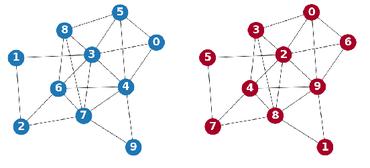Joint graph learning from Gaussian observations in the presence of hidden nodes
Graph learning problems are typically approached by focusing on learning the topology of a single graph when signals from all nodes are available. However, many contemporary setups involve multiple related networks and, moreover, it is often the case that only a subset of nodes is observed while the rest remain hidden. Motivated by this, we propose a joint graph learning method that takes into account the presence of hidden (latent) variables. Intuitively, the presence of the hidden nodes renders the inference task ill-posed and challenging to solve, so we overcome this detrimental influence by harnessing the similarity of the estimated graphs. To that end, we assume that the observed signals are drawn from a Gaussian Markov random field with latent variables and we carefully model the graph similarity among hidden (latent) nodes. Then, we exploit the structure resulting from the previous considerations to propose a convex optimization problem that solves the joint graph learning task by providing a regularized maximum likelihood estimator. Finally, we compare the proposed algorithm with different baselines and evaluate its performance over synthetic and real-world graphs.
PDF Abstract

